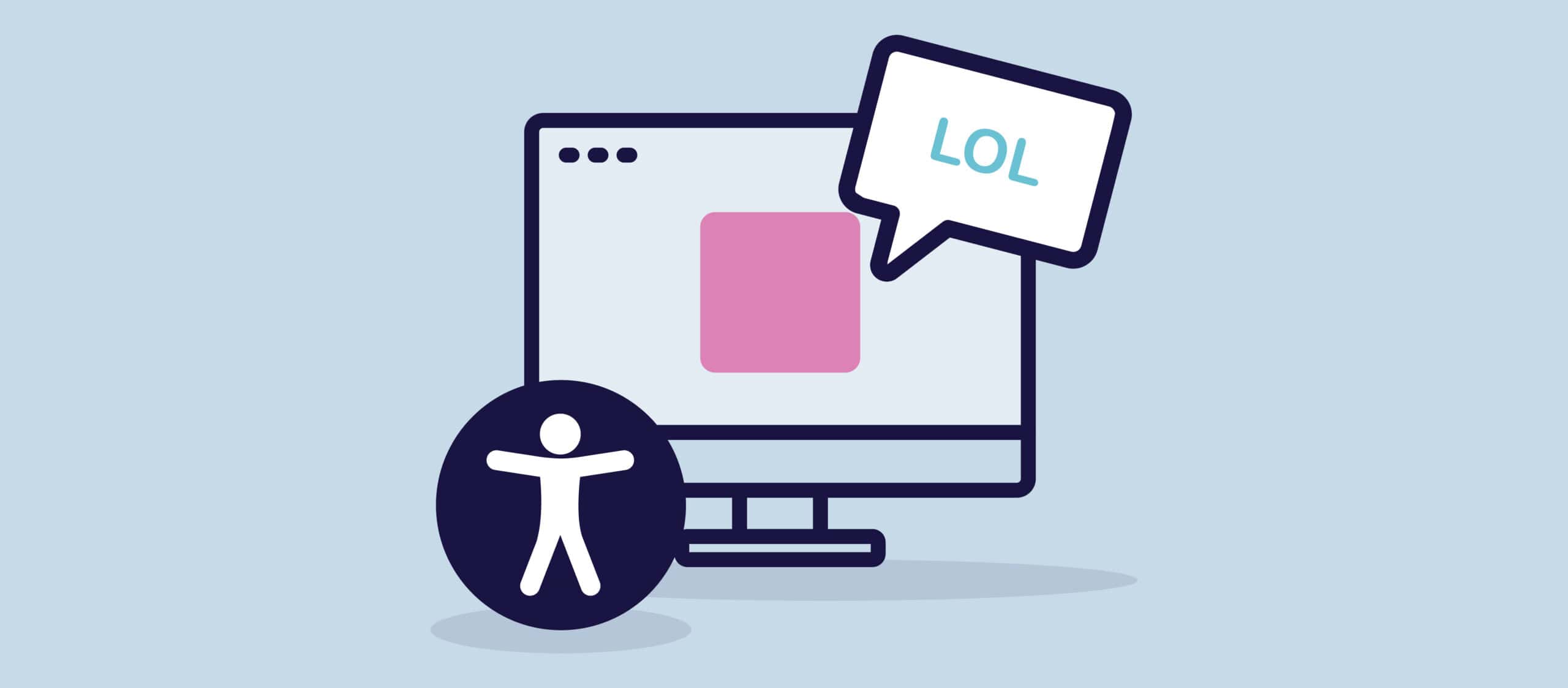While the internet has become a tool for global connectedness, fostering an increasingly inclusive digital landscape remains a paramount concern. One aspect that often evades scrutiny in this context is the accessibility of memes. These visual snippets of humour and wit that fill our social media feeds have become a staple of digital communication. However, many fail to consider how these seemingly innocent images can create barriers for people who rely on assistive technology.
Commonly, memes are shared as image files, often featuring overlaid text. While appearing straightforward and inclusive, this format presents a severe challenge to those relying on screen readers and other assistive technologies. The problem lies within the limitations of these technologies. While they’re adept at interpreting plain text, they stumble when faced with text embedded within an image. This excludes people with sight loss from this crucial aspect of modern digital culture.
Text-to-speech software, which vocalizes digital text content for those people with sight loss or dyslexia, struggles with memes. When encountering an image, the software can only provide a general description, and any overlaid text goes unnoticed. This means that individuals reliant on these technologies receive a fundamentally fragmented experience devoid of the layered meanings that the meme intended to communicate.
Consider a meme featuring an image from a popular film with a caption that humorously reinterprets the scene. The humour is derived from the juxtaposition of the image and the text. The issue is when a screen reader encounters this meme, and the software cannot provide an accurate and comprehensive description. The user misses out on the intended humour, reducing the meme to an empty shell devoid of context.
Another concern is the rampant use of cultural references and internet slang within memes. This further intensifies the inaccessibility, as these are usually understood only within a particular context or community. Understanding a meme’s underlying humour or sentiment often requires a deep immersion in a certain facet of popular culture, which can be difficult for individuals not privy to these specific circles.
Even if technology could read the text in an image, it wouldn’t effectively translate the joke or cultural context. Transcribing a meme into speech does not automatically make it accessible if the software cannot interpret the specific cultural and humorous nuances.
However, this does not mean that the situation is entirely bleak. Increasing awareness of the accessibility issues surrounding memes has led to some promising solutions. “Alt text” – an HTML attribute designed to provide a text description of images for screen readers – has gained traction. Content creators can add alt text to their images, providing a description that can be read by screen reading software.
However, it’s more than just the technical side that needs addressing. A large part of this issue lies in raising awareness among content creators and encouraging the widespread adoption of practices such as including alt text. The more creators are conscious of these accessibility issues, the more they can play an active role in making their content accessible to all.
While memes have become a cornerstone of digital communication, they present unforeseen accessibility challenges. As we continue to cultivate a more inclusive digital landscape, it’s crucial to pay attention to the subtle ways in which we may inadvertently exclude individuals from the conversation.
Just as memes have changed how we communicate online, so must our approach to their creation and distribution evolve to ensure that nobody is left out of the joke.


